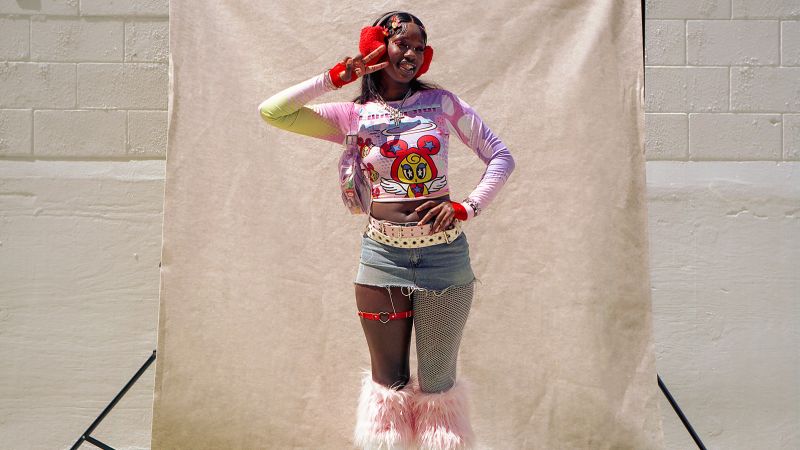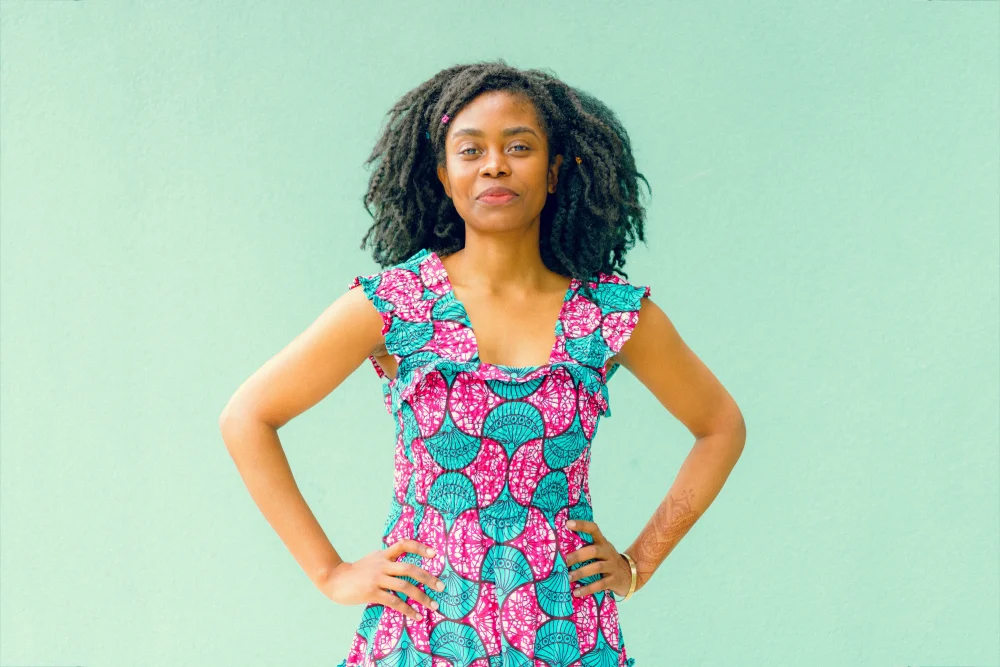CNN
—
Whether it’s the ripped jeans and studs of 1970s punks or the heavy make-up of 1980s New Romantics, the visual politics of alternative fashion have always been proudly divorced from mainstream culture. From the rockabilly and hippie movements to 1990s grunge and rave to 1990s emo and cyberpunk, these “scenes” coincide with music scenes and subcultures dating back to the 1950s and 1960s, and have long been associated with anxiety and It was a synonym for rebellion.
But alternative spaces, whether in music or fashion, often felt unwelcoming to black creators. Already in the 1930s, pioneers of alternative black artists such as Sister Rosetta Tharpe, whose fusion of gospel and electric guitar earned her the nickname “The Godmother of Rock and Roll,” and Little Richard’s bold, dramatic Despite its looks and sound, during the ’50s alternative popular culture has been dominated by white people.
This is a reality discussed by British alternative rock band Skunk Anansie. The group has a black bassist and lead singer, and Skin told the Guardian in 2020: “We’re far from getting the recognition we deserve, because our faces are the way the establishment wants to define Britain. Because it wasn’t something.” Willow Smith said she has experienced similar prejudice, saying: face In 2021, “Black people created rock music. But we’ve been indoctrinated and conditioned to believe that we can only be successful in certain categories and entertainment. And that’s never OK.”
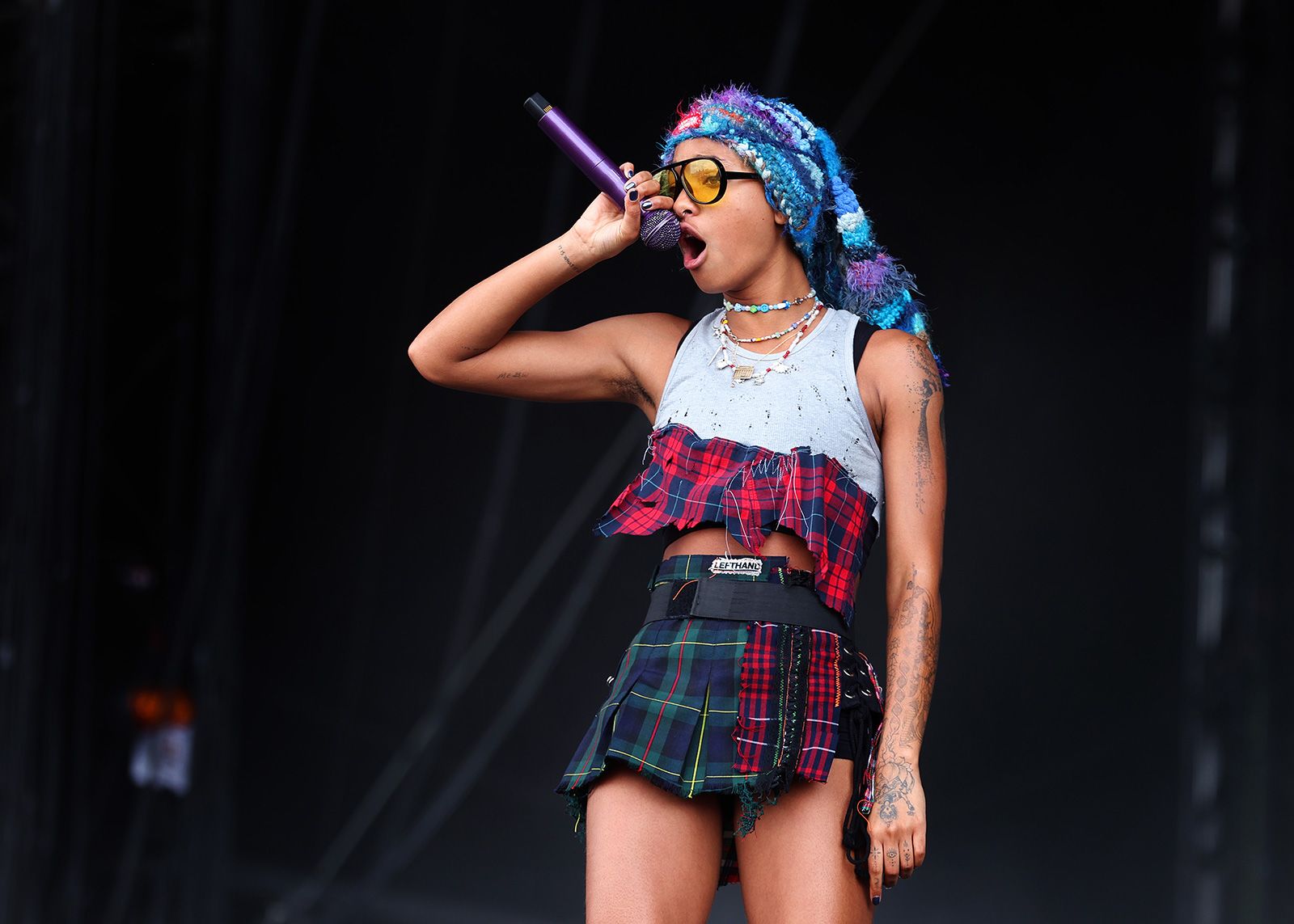
But this time, a new movement on social media is shaking things up. For example, with his 1.8 billion views on TikTok, #altfashion in 2023 is once again making a statement. While the classic elements remain: teen angst, anti-status quo, political grievances, and an “I am me whether I like it or not” vibe, alternative fashion is now more about black people’s sense of self. It is a place where they are working to reclaim and solidify their presence, showcasing their unique talents in another world that has often turned its back on them. As of this writing, #blackalt has approximately 170 million views on TikTok.
What do hashtags represent? Expect references in different and sometimes opposite outfits. For example, combine the color palette of Barbiecore (using bright, bright colors such as pink and white) with emocore (employing deep tones such as black and purple), or combine classic alternative fashion items such as fishnets with his Y2K style. I also combine modern elements (earmuffs). , leg garters, multiple belts, faux fur, and a shower of accessories.
And then there’s the hugely popular #aliyahcore movement. This refers to the trend created by Aliyah Bah, better known as “aliyahsinterlude” on social media. Aliyah, a 20-year-old influencer based in Atlanta, started posting outfits and “Get Ready With Me” videos on TikTok during the 2020 coronavirus pandemic, when she started posting #aliyahcoreher #aliyahcore videos. He was the first person to create a hashtag. As of this writing, she has over 2.6 million followers on the platform, with over 620,000 followers on Instagram and over 370,000 followers on Twitter. In a video call with CNN, she described #aliyahcore as a style that combines aspects of 2000s Y2K fashion and streetwear with Japanese-inspired Harajuku and gyaru culture.
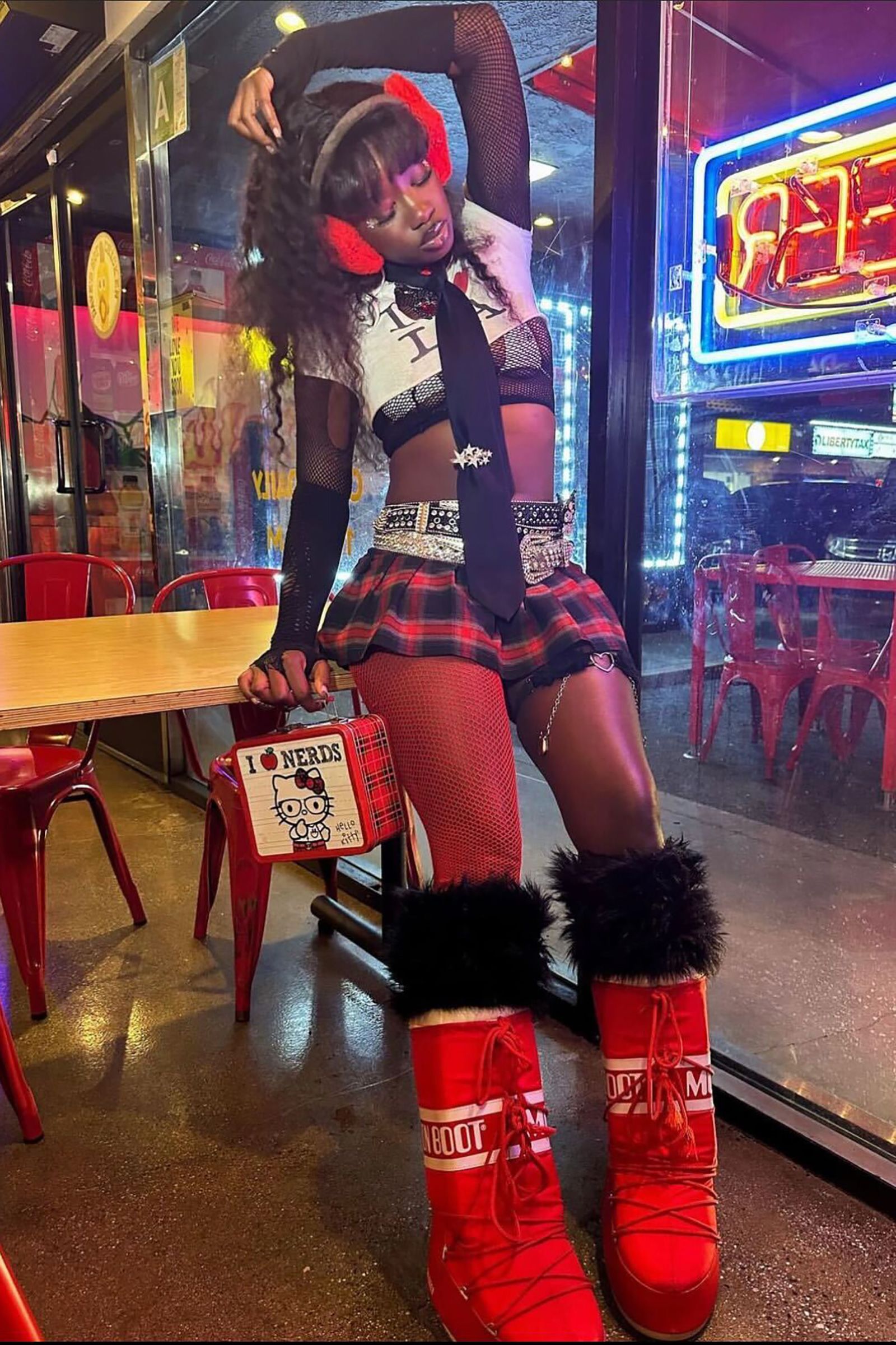
“It goes beyond fashion,” Aliya said of the movement. “It starts with not caring about how you are seen. You don’t care what anyone says about you, because you know who you are and that energy… #aliyahcore is about Black girls, especially brown girls, who feel unwelcome in the fashion world due to colorism and other negative stereotypes. It also touches on the issue of skinned girls.
“The fact that I’m a dark-skinned Black woman means I have to work 10 times harder,” she said. “If you’re a lighter-skinned person, you can do alternative things like this, and people rip it off, but when a darker-skinned person does it, we get this negative connotation. I take it…It’s like if you’re black, you’re demonized for it.”
“You don’t see many dark-skinned women in the fashion industry,” Aliya continued. “I’m happy to be able to influence dark-skinned girls.”

White people also more easily navigate spaces of “public rebellion” by expressing themselves and publicly communicating their sense of opposition to the status quo without much fear of negative or violent consequences. You can now gate. For black people, participating in fashion and subcultures that promote unapologetic self-expression can be daunting. Take, for example, the highly politicized and often violent reactions to zoot suits worn in the 1930s and 40s. These sharply tailored yet voluminously draped blazer and pant sets (often accessorized with fedoras or trilby-style hats) are popular with black and Latino/Chicano people across the United States. It was popular in the area’s jazz, blues, and dancehall scenes, but its wearers became targets of racism. violence.Historian Cathy Pais, author ofThe zoot suit: The mysterious history of extreme style‘ is credited to. smithsonian magazine “This was probably the first time in American history that fashion was considered a cause of widespread civil unrest.”
Navae Davis, a 17-year-old influencer from New York City, said she feels secure in her sense of style because of the inclusivity of today’s #aliyahcore community.
“There have definitely been a few times where people have treated me a little differently,” she told CNN over Zoom. “I feel like[people]have misjudged my personality because of the way I dress, even though they’ve never talked to me or even approached me at all.”

#aliyahcore The inclusivity within the community is refreshing, Navae explained. “When you meet someone who is also interested in alternative fashion, has their own style, and lives their life 100% themselves… it’s really amazing.”
“Especially as a person of color who doesn’t feel seen or heard, how we say ‘I’m here’ has a lot to do with how we dress.” ,” said Holly Alford, director and senior director of inclusion and equity. He earned a bachelor’s degree in design from Virginia Commonwealth College of Art.
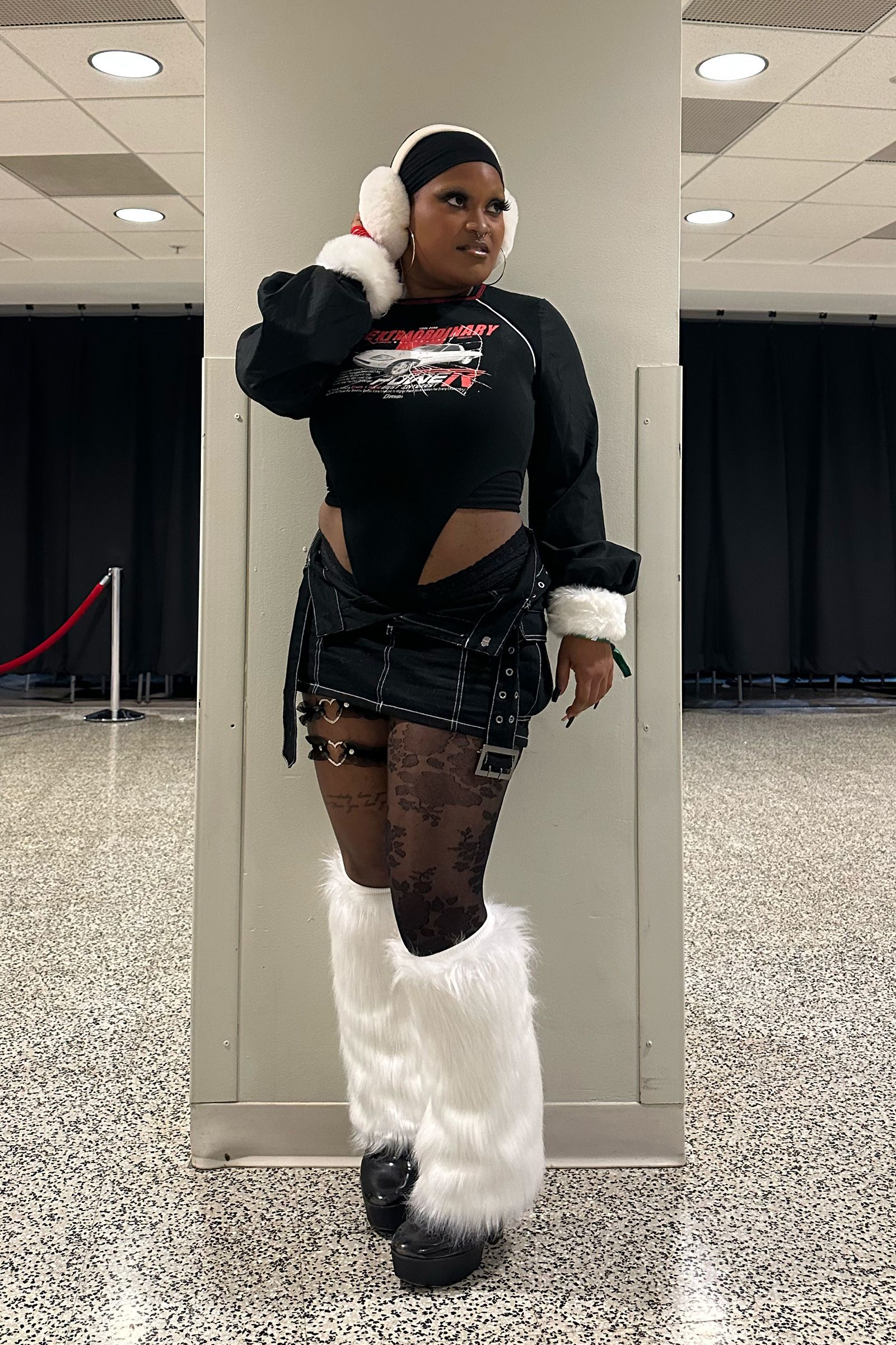
But not everyone is happy about the rise of #aliyahcore. Many black women who wore similar clothing before the trend exploded have expressed frustration that their authentic style has been “erased.”
“I think the biggest misconception about #aliyahcore is that a lot of people think I’m saying I created every subset, every detail,” Aliyah replied. “It’s really just a bunch of different styles rolled into one.”
Aliyah and Navae have been in a mutual relationship on social media for some time, but they met in real life for the first time in February. So Aliyah gave Navae an #aliyahcore makeover of her own.
“It felt like home,” Navae said of her resulting look.
“Today, tomorrow and all of 2023 #aliyahcore,” she exclaimed with a laugh. “period!”

